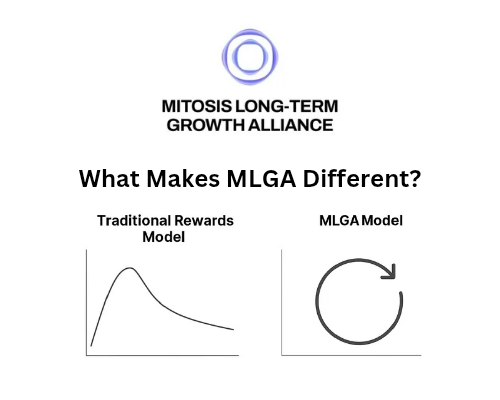Cross-Protocol Synergies: Mitosis in a Multi-Protocol Yield Farm

Summary
In this article, we explore how Mitosis Vaults (modular, cross-chain liquidity engines) can be strategically paired with leading lending protocols like Aave and Compound to create a unified, high-yield farming experience. First, we introduce the concept of cross-protocol yield aggregation, then dive into the mechanics of Mitosis’s Hub Assets, miAssets, and maAssets. Finally, we present a step-by-step case study showing how to deposit into a Mitosis Vault, supply collateral on Aave, and leverage Compound’s interest-rate markets—all while maintaining capital efficiency and minimizing friction. You’ll walk away with a clear framework for designing a cohesive, multi-protocol yield farm that taps into the strengths of each platform.
Introduction
Imagine your crypto portfolio as a convertible that not only drives on one highway but can instantly switch to two more—each optimized for speed, stability, or convenience. That’s the promise of cross-protocol yield farming: combining complementary DeFi layers into a single, efficient strategy. In this guide, you’ll learn:
- Why combining Mitosis Vaults with Aave and Compound unlocks superior returns,
- How Mitosis’s programmable liquidity primitives transform your deposits into versatile “Hub Assets,” and
- Exactly how to execute a multi-step deployment across all three protocols.
By the end, you’ll have a hands-on playbook for a multi-protocol yield farm—no more siloed liquidity or tedious manual bridging.
1. The Rationale for Cross-Protocol Yield
1.1 Fragmented Liquidity in DeFi
- DeFi liquidity is fragmented across chains and protocols, leading to idle capital and missed yield opportunities. arXiv
- Yield farmers often shuffle assets manually between Aave’s variable-rate markets and Compound’s algorithmic interest pools, incurring gas fees and risk. NerdWallet: Finance smarter
1.2 Synergy of Lending and Vaults
- Aave offers flash loans, stable/variable rates, and broad asset support, with billions in liquidity. aave.com
- Compound uses autonomous rate curves to balance supply/demand, distributing COMP tokens as governance incentives. ULAM LABS
- Mitosis Vaults (see “Unlocking DeFi’s Next Chapter with Mitosis Vaults”) mint 1:1 Hub Assets on Mitosis Chain and automatically bridge via Hyperlane for cross-chain composability. Mitosis University
By layering Mitosis’s Ecosystem-Owned Liquidity (EOL) model atop these lending platforms, you can:
- Maintain on-chain collateral in Aave/Compound,
- Seamlessly redeploy idle assets via Mitosis Vaults, and
- Capture rewards from all three protocols with one cohesive position.
2. Primer on Mitosis Vaults
2.1 Vault Mechanics & Hub Assets
- Deposit → Hub Asset: When you deposit ETH or USDC, Mitosis locks it into a Vault and issues a Hub Asset(ERC-20) at a 1:1 ratio on Mitosis L1, ready for yield strategies. Mitosis University
- miAssets & maAssets: Single-asset positions become miAssets, while multi-asset pools mint maAssets—both ERC-4626 compliant. Mitosis University
- Hyperlane Bridging: Cross-chain messages ensure liquidity remains backed and redeemable across chains. Mitosis University
2.2 Governance & Campaigns
- Matrix Vaults enable protocols to launch curated liquidity campaigns, tailoring lock-up periods and rewards. Mitosis University
- Early withdrawals incur redistributions similar to the Matrix Straddle Vault’s model—promoting commitment and aligning incentives. Mitosis University
For more on Mitosis concepts, visit our Glossary for terms like “Ecosystem-Owned Liquidity” and “Hub Assets.”
3. Case Study: Building a Mitosis + Aave + Compound Yield Farm
3.1 Step 1: Deposit into a Mitosis Vault
- Choose Asset: ETH or USDC in your wallet.
- Select Vault: Navigate to the Mitosis UI and click “Deposit” on your chosen vault.
- Receive Hub Asset: Mitosis issues 1:1 miAsset or maAsset, ready for further use. Mitosis University
Tip: Use the “Unlocking DeFi’s Next Chapter with Mitosis Vaults” guide for UI walkthroughMitosis University.
3.2 Step 2: Supply on Aave
- Bridge Hub Asset to Ethereum: Via Hyperlane, send your Hub Asset back to Ethereum mainnet.
- Aave App: Go to Aave and connect wallet.
- Supply: Deposit the Hub Asset as collateral, earning variable interest. Web3, Aggregated.
- Borrow/Leverage (Optional): Borrow against your collateral to amplify yield—mind the health factor. aave.com
3.3 Step 3: Leverage Compound
- Transfer collateral: Move any idle collateral from Aave to Compound if it offers better APY.
- Supply: In the Compound Finance UI, supply the collateral to earn cTokens and COMP incentives. ULAM LABS
- Monitor Rates: Use Compound’s interest rate curves to decide when to shift back to Aave or redeploy via Mitosis Vaults. docs.compound.finance
4. Benefits and Best Practices
4.1 Capital Efficiency
- One Deposit → Three Protocols: Your capital remains active, accruing rewards in Mitosis, Aave, and Compound simultaneously.
- Reduced Gas Costs: Mitosis’s cross-chain messaging batches operations, lowering per-transaction fees.
4.2 Risk Management
- Dynamic Rebalancing: Monitor APY dashboards on Aave and Compound to rotate collateral.
- Governance Exposure: Holding miAssets preserves your right to vote in Mitosis campaigns; supplying on Aave/Compound earns governance tokens (AAVE, COMP). arXiv
Conclusion
By integrating Mitosis Vaults with Aave and Compound, you engineer a multi-layer yield farm that harvests interest, liquidity mining rewards, and governance tokens—all from a single initial deposit. Key takeaways:
- Modular Liquidity via Mitosis unlocks cross-chain composability.
- Lending Markets on Aave & Compound supply stable passive income and governance incentives.
- Strategic Rotations between protocols maximize APY while managing risk.
Ready to architect your cross-protocol farm? Start by depositing into a Mitosis Vault and take your yield strategy to the next level.
Internal Links
- Liquidity TVL Glossary
- Expedition Boosts
- Straddle Vault
- Mitosis University
- Mitosis Blog.
- Mitosis Core: Liquidity Strategies.
References
- Unlocking DeFi’s Next Chapter with Mitosis Vaults Mitosis University
- miAssets and maAssets — Tokenizing Liquidity Positions in Mitosis Mitosis University
- Decoding Mitosis: A Deep Technical Dive … EOL & Matrix Vaults Mitosis University
- Matrix Vaults: A Deep Dive into Mitosis’ Curated … Mitosis University
- Phase 4: The Final Chapter of the Matrix Straddle Vault Mitosis University
- Aave is the world’s largest liquidity protocol aave.com
- How to Yield Farm with Aave on Polygon Web3, Aggregated.
- Yield Farming: What It Is, How It Works – NerdWallet NerdWallet: Finance smarter
- How Compound Crypto Works: A Practical DeFi Guide ULAM LABS
- Interest Rates – Compound III Docs docs.compound.finance
- DeFi Protocols for Loanable Funds (PLFs) – Gudgeon et al. arXiv
- Financial Intermediation and Risk in DeFi Lending – Castro-Iragorri et al. arXiv

Comments ()